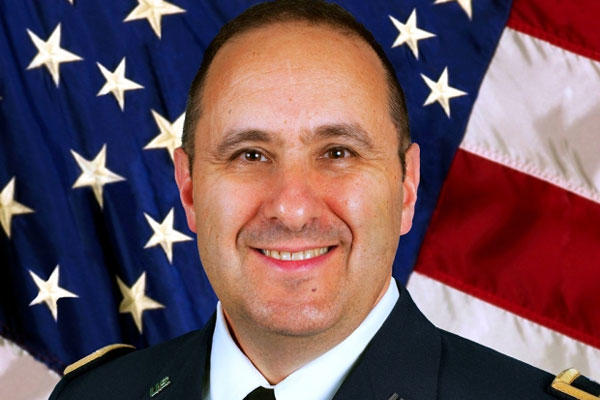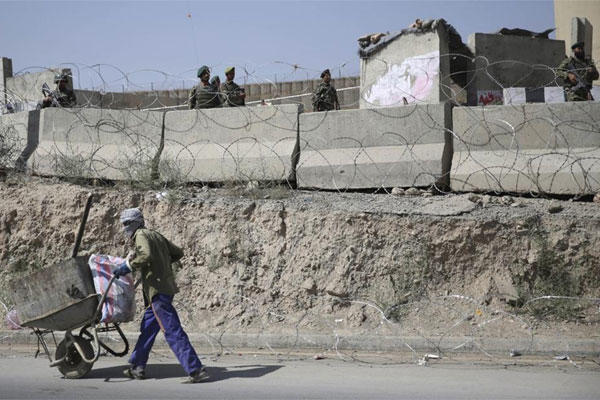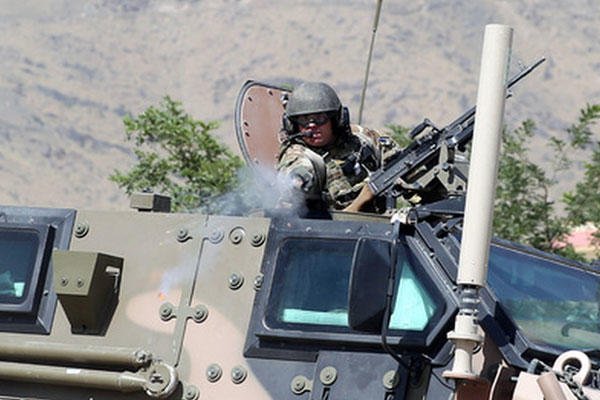A U.S. Army major general was shot and killed Tuesday by an Afghan soldier who opened fire with an automatic weapon during a visit to an Afghan training facility on the outskirts of Kabul, officials said.
As many as 15 other coalition troops, including several Americans and a German brigadier general, were wounded in the attack at the British-run Afghanistan National Military Academy, often called Afghanistan's "West Point," the officials said.
The slain general was later identified as Harold Greene, a native of upstate New York who spent more than three decades in the service. He's the highest-ranking American officer killed by a hostile act since the Sept. 11, 2001, terrorist attacks and the most senior officer to die in an overseas combat zone since the Vietnam War.
"It's a terrible day," Navy Rear Adm. John Kirby, the Pentagon press secretary, said Tuesday during a news conference. "It's a terrible tragedy."
The shooter was immediately killed by return fire, but it was unclear whether the return fire came from Afghan or coalition troops. "We believe this individual was an Afghan soldier," and not a Taliban infiltrator wearing an Afghan army uniform, Kirby said. "We have no indication that he wasn't" an Afghan soldier, he said.
Germany's military said in a statement that 15 troops had been wounded in the attack, including the German brigadier general, NBC News reported.
Gen. Mohammad Zahir Azimi, a spokesman for Afghanistan's Defense Ministry, said a "terrorist in an army uniform" opened fire on both local and international troops. Azimi said the shooter had been killed and that three Afghan army officers were wounded. He did not offer a motive for the assault, the Associated Press reported.
Initial reports said that five U.S. troops had been killed in the morning attack, but those reports weren't confirmed.
Greene reportedly served as deputy commanding general of Combined Security Transition Command-Afghanistan in Kabul.
He earned a Ph.D. in materials science from the University of Southern California, according to a previous news release from the Army. He served at the Pentagon and other posts in the U.S. and abroad. His wife, Sue Myers, has also served as an Army officer and study director at the prestigious U.S. Army War College in Carlisle, Pennsylvania. They have a daughter, Amelia.
The last U.S. Army major general to die in a combat zone was George Casey, whose son, retired Army Gen. George Casey, led U.S. forces in Iraq and went on to become the Army chief of staff.
More recently, Army Lt. Gen. Timothy Maude died on the 9/11 terrorist attack on the Pentagon.
Kirby repeatedly stressed that the attack would not undermine the cooperation and trust between coalition forces and the Afghan National Security Forces as the U.S. and NATO seek to withdraw combat troops by the end of this year.
Afghan President Hamid Karzai condemned the attack as "cowardly." In a statement, Karzai said it was "an act by the enemies who don't want to see Afghanistan have strong institutions."
The Taliban, which often claims credit for insider attacks to undermine the confidence of the allies in their mission, didn't immediately claim responsibility. In a statement sent to journalists, Taliban spokesman Zabihullah Mujahid praised the "Afghan soldier" who carried out the attack, as well as a police officer in eastern Paktia province who shot at NATO forces earlier.
Upon learning of the incident, Defense Secretary Chuck Hagel immediately called Marine Gen. Joseph Dunford, commander of the International Security Assistance Force, and was told that ANSF "was a security force that we believe grows stronger by the week," Kirby said. "The partnering and cooperation gets better and better every week," he added.
However, ABC News contributor Steve Ganyard, a retired Marine colonel, said that "From the ISAF side, from the U.S. side, any form of trust between the Afghans and the U.S. trainers has now been fully broken" by the killing of the general.
Earlier this year, the U.S. protested Afghanistan's release of 88 prisoners, including seven believed to have been responsible for insider attacks that have strained the working relationships between coalition forces and ANSF.
During the height of the insider threat in 2012, ISAF briefly suspended all activities with ANSF forces and later instituted a "guardian angel" program in which an armed and ready coalition soldier was to be present whenever coalition troops mingled with ANSF forces.
So-called "insider" or "green-on-blue" attacks peaked in 2012, when ISAF recorded 46 separate insider attacks that killed a total of 62 coalition troops, compared to 21 attacks in 2011 that killed 35.
In 2013, there were 16 coalition deaths in 10 separate insider attacks. Marine Gen. Joseph Osterman, then the ISAF director of operations, gave credit for the decline to ANSF's improved efforts to weed out suspected insurgents from its ranks.
"They put in much more robust screening processes, education processes, and at the local level, just awareness of soldiers who were potential 'green-on-blue' perpetrators," Osterman said.
However, the killing of the general raised questions about the "vetting process" for ANSF recruits to curb insider attacks. Kirby said that such attacks were a "pernicious threat," and "it would be impossible to eliminate, completely eliminate that threat."
A total of 3,450 coalition troops, including 2,340 Americans, have been killed since the start of the war in Afghanistan in October 2001. This year a total of 56 coalition troops, including 39 Americans, have been killed, according to the website icasualties.org.































